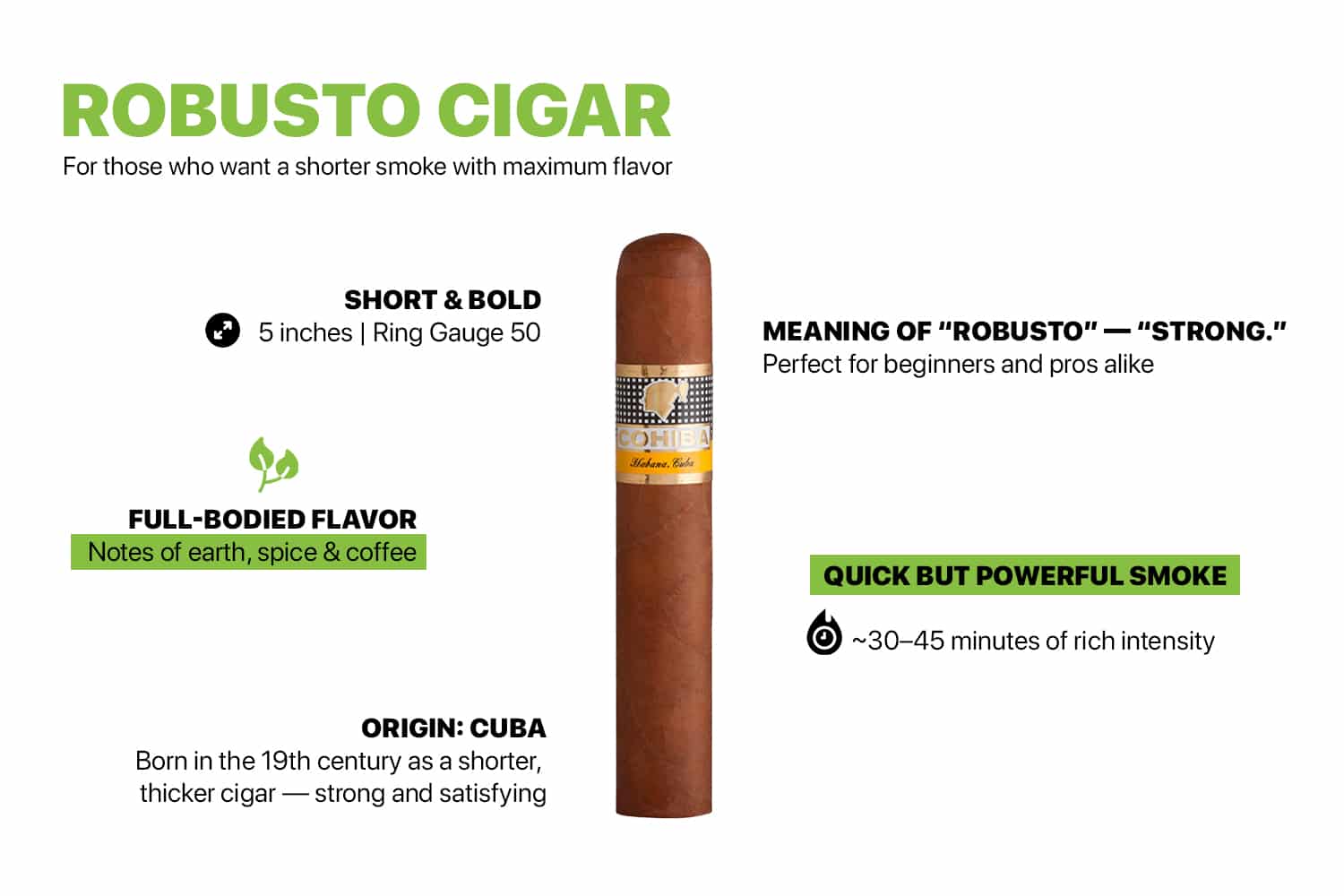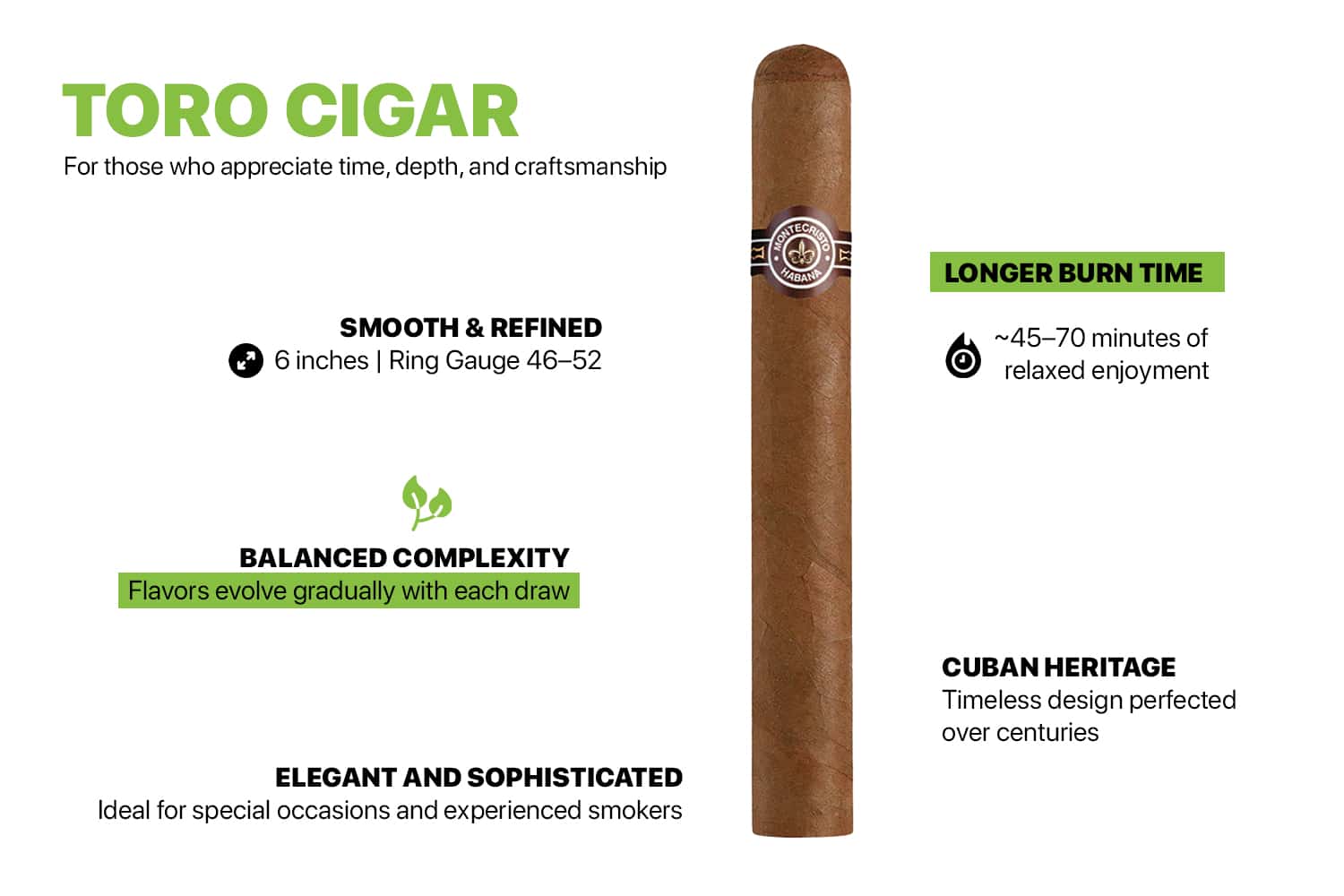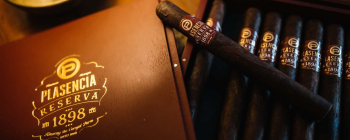
What’s the Difference Between Robusto and Toro?
There are various types of cigar out there, but it’s not always easy to distinguish between them. In fact, there’s often quite a lot of overlap. For example, what’s the difference between a Robusto and a Toro? That’s what this guide will answer.
The word ‘vitola’ refers collectively to a cigar’s shape and size. ‘Robusto’ and ‘Toro’ are separate vitolas. Nonetheless, it can be tricky to tell them apart just by looking at them.
This is a potential problem, as a cigar’s vitola affects its flavor and burn time. Below, we’ll discuss how to discern between a Robusto and a Toro.
What is a Robusto Cigar?

Robusto cigars are about 5 inches long with a ring gauge of 50. These dimensions make for a more concentrated flavor profile from the first puff. Robusto cigars typically come with notes of earth, spice, and coffee.
This cigar shape originated in Cuba. In the 19th century, cigar production on the island was thriving. However, Cuban cigar makers knew they had to adapt to keep their customers satisfied.
At the time, cigars tended to be long and slender. As a result, they were also somewhat time-consuming to smoke. Was it possible to create a cigar that took less time to burn but still packed a punch? Yes, it was indeed possible, as Cuban cigar brands found out.
The trick was to go shorter but thicker. The new cigar profile quickly found popularity. No longer did cigar smoking have to be reserved for formal occasions. Now it was a practical option at casual get-togethers, too.
Robustos go heavy on the filler. This is another reason why they deliver powerful flavor. The word ‘Robusto’ itself means ‘strong’ in Spanish. The cigar’s exact strength, though, will depend on the choice of blend.
What is a Toro Cigar?

The Toro is usually six inches long with a ring gauge of 46 to 52. It provides a well-balanced profile of flavors. You’ll have plenty of time to savor them, too, as a Toro tends to last a while.
The Toro’s history isn’t quite as clear-cut as the Robusto’s. That’s because its story is very much tied in with that of Cuban cigars as a whole.
Spanish settlers arriving in Cuba in the 16th century brought tobacco with them. This was the seed of what would become the island’s world-renowned tobacco industry.
Cuban tobacco growers spent centuries tweaking and fine-tuning the recipe for their cigars. The classic Toro design eventually took shape, with its thick girth and tapered head.
The 19th century saw many cigar connoisseurs visit Cuba to sample Toro sticks. Early in the Cold War, the Cuban Revolution upturned the island’s politics. Shortly afterwards, the United States placed a trade embargo on Cuba.
This volatile political scene led many local cigar producers to flee. As a result, they helped to spread the popularity of the Toro well beyond Cuba’s borders.
Robusto vs Toro: Key Differences
‘Robusto vs Toro’ isn’t a simple matter of ‘strong vs long’. To put a long story short, there can be much more than just one difference between a Robusto and a Toro. The two vitolas can differ markedly in the following respects:
Length
The ‘classic’ Robusto, as we have already mentioned, is about five inches. However, we emphasize the word ‘about’. Robustos can potentially be as much as an inch shorter or longer.
Either way, the Robusto’s length strikes a middle ground. It’s neither too short nor too long. It doesn’t outstay its welcome or feel like it’s over before it’s really begun.
This all goes some way towards explaining why the Robusto has become such a popular vitola. It’s undaunting for beginners but still gives experienced smokers a satisfying challenge.
Generally, Toros start at six inches long but can have up to an inch extra. Either way, Toros usually take longer to smoke than Robustos. This makes the Toro better for experienced smokers unlikely to be sated by a shorter session.
Ring Gauge
The ‘typical’ ring gauge figures, too, are only approximate. For example, not all Robustos have a 50 ring gauge. Some can be around the 48 or 54 mark instead.
Conversely, a Toro’s ring gauge can be in the region of 46 to 52. Hence, a Toro is often thinner than a Robusto, if only subtly. Either type of stogie will fit comfortably in the hand.
Appearance
Naturally, when smoking in a public place or simply with friends, you want to look good. That’s where the aesthetic aspect of your cigars comes in.
Often, the larger the ring gauge, the more intricate the band. This makes sense, since there’s more space for an elaborate design. There’s a big element of prestige to being seen holding a cigar with a visibly detailed band.
Robustos are generally thicker than Toros and so tend to sport the more luxurious bands. At the same time, they don’t exactly hold a monopoly in this area.
At Swiss Cuban Cigars, we stock lots of cigars with eye-catching bands. On Montecristo cigars, gold and white lines surround a gold fleur-de-lis.Meanwhile, Cohiba cigars come with holographic elements, checkered squares, and embossed lettering. These are at least signs that your own Cohiba stogies are authentic. We sell only genuine cigars, with cosmetic flourishes intact.
Smoking Time
Many different factors affect how long a cigar lasts. One is how often you puff. Puffing constantly will use up the cigar more quickly, so try slowing it down to once per minute. Besides, it looks classier!
Smoking in windy conditions is also a big no-no. To really get your money’s worth from your cigars, smoke them indoors if possible. It’s also important to be careful how you set up your humidor. Don’t neglect to season this storage unit and calibrate its hygrometer.
When it comes to burn time, what’s the typical difference between a Robusto and a Toro? As Toros are larger, it isn’t surprising that they generally burn for longer, too. Expect 30-45 minutes with a Robusto and 45-70 minutes with a Toro.
Flavor Profile
As mentioned earlier, Robustos are earthy and spicy, with undercurrents of coffee. Nonetheless, the exact flavor profile will inevitably depend on the individual cigar.
As the Robusto cigar’s popularity flourished, brands tweaked the established formula. By experimenting with blends and wrappers, they deepened the flavor profile’s complexity.
Just look at the Cohiba Robusto, which brings touches of wood, almond, and marshmallow to the table. Unlike many Robustos sold at garages, this Cohiba variety is definitely premium standard.
The intensity of a Robusto starts out strong before fading somewhat. A Toro’s flavor profile takes longer to build up, but when it does, it’s more than worth the wait. At that point, you get a delightfully complex cornucopia of beguiling flavors.
Construction and Draw
When taking a puff on a cigar, you don’t want to struggle to bring out its flavors. However, this can easily happen if air does not flow freely through the cigar. This is where the quality of the cigar’s construction can prove especially crucial.
The good news is that brands have been making both Robustos and Toros for decades now. So, they have had time to perfect the process. Cigars from premium brands offer a smooth, consistent draw.
It’s obviously frustrating when you have to keep fixing an uneven burn. Fortunately, this is much less likely to be an issue with well-made cigars.
The bigger the ring gauge, the cooler the draw. That’s the general rule, anyway. That’s why Robustos, compared to Toros, lean towards the cooler side of the draw scale. This makes it easier to detect nuances in the flavor.
Ultimately, the better the construction, the better the draw. There’s no big difference between a Robusto and a Toro in that particular respect. That’s why you need to get your cigars from reputable outlets like Swiss Cuban Cigars.
Robusto vs Toro: Comparison Table
| Cigar Type | Length | Ring Gauge | Appearance | Smoking Time | Flavor Profile |
| Robusto | 4.5-5.5 inches | 48-54 | More detailed | 30-45 minutes | Upfront intensity |
| Toro | 6-6.5 inches | 46-52 | Less detailed | 45-70 minutes | Evolving complexity |
Expert Tips
Telling the difference between a Robusto and a Toro is just the start. You still need advice on how to pick between these two types of stogie. Here are several factors especially worth considering:
- Your experience level: If you’re new to smoking cigars, it’s wiser to start with a Robusto. It burns more quickly, so it’s less of a commitment. Veteran smokers are more likely to favor the Toro’s greater complexity and lifespan.
- The time you have available: Of course, even experienced smokers can lack enough free time for Toros. Robustos are easier to squeeze into those awkward gaps of otherwise hectic schedules.
- When you want to smoke: Have a celebratory event coming up, like a wedding? A Toro promises just the right elegance. As Robustos are shorter, they are better for casual meet-ups.
- Drinks you want to pair with your cigars: Robustos are among the many cigars that go well with whisky. Meanwhile, it’s wise to pair beers with lighter-bodied cigars such as Toros.
There’s also the simple matter of personal preference. As you become more experienced with smoking cigars, you will inevitably have favorites. So, it will also be easier to decide whether to go down the Robusto or Toro route.
Bottom Line
So, what is the difference between a Robusto and a Toro? There’s much more than just one difference to account for. A Robusto is shorter but thicker, enabling it to deliver a rapid punch of power. A Toro is longer but thinner, meaning its more nuanced flavors unfold over a longer period of time.
With all this information at hand, you can more easily settle on the right vitola for your needs. If you are an inexperienced smoker or pressed for time, a Robusto is the way to go. What if you are a cigar connoisseur craving a sophisticated flavor profile? Consider a Toro.In any case, no matter which vitola you go for, the cigar’s overall quality remains key. That’s why you need to be careful where you buy your cigars. By shopping online with Swiss Cuban Cigars, you can ensure your stogies are the real deal. We proudly dispatch to customers worldwide, so don’t hesitate to browse our website today.
Oct 22, 2025
Last Modified: Oct 22, 2025

Table of Contents

